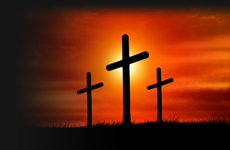Jesus' Crucifixion In Art
The symbol of Christ on the cross has infiltrated culture in innumerable ways, and depictions have become ubiquitous. There is no other subject matter that better reflects the historical progression of artistic expression. This is fitting, as there is no other event that has had comparable effect on all aspects of human history.

"Crucifixion"
Artist: Anthony van Dyck
1630
Painting
The Crucifixion was completed by Anthony van Dyck in around 1630 and stands at an impressive 2.51m tall
This painting was a curved edge at the top because it was originally intended for a specific spot in the convent of Récollets in Lille, France. It was to be placed in the high altar, a tricky location to complete such a delicate and complicated painting.

"The Crucified Christ"
Artist: Velázquez
1632
Painting
The work, painted in oil on canvas, measures 249 × 170 cm and is owned by the Museo del Prado. Christ has both arms drawn a subtle curve, instead of forming a triangle. The loincloth is painted rather small, thus showing the nude body as much as possible. The head shows a narrow halo, as if it came from the figure itself; the face is resting on the chest, showing just enough of his features. The long, straight hair covers a great part of the face, perhaps foreshadowing the death, already inflicted as shown by the wound on the right side.
- page 24 of 38 -
